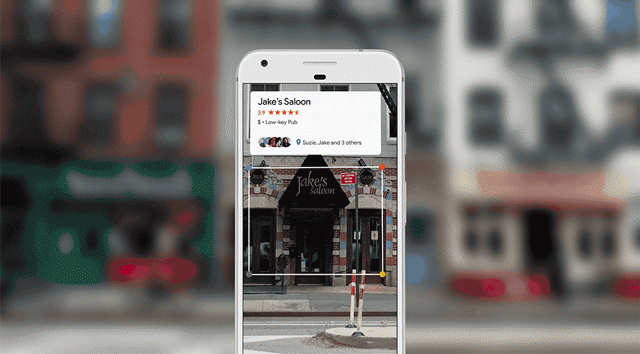The AR Cloud is the theoretical entity that will power AR’s promise and the picture we all paint when explaining its future. It will enable AR devices to perform anywhere by tapping into geo-relevant data and object-recognition blueprints.
Geo is the key term. A lot of relevance in AR will be tied to physical places. Graphical overlays will add context to everything from historical sites (education) to storefronts (commerce) to hiding spots (gaming) to people (social). But that spatial relevance is a source of both value and friction.
In other words, AR’s linkage to geographically-defined relevance could subject it to the same challenges that face other location-targeted content on smartphones. And the biggest place these challenges have become evident over the past decade is with geo-targeted mobile ads.
One issue is that mobile devices can’t always report their location due to app-level permissions. As background, location-targeted ads are served by ad networks that partner with apps. So when you’ve opted in to GPS tracking within a given app, you can be pinpointed within a meter.
But when an ad network doesn’t get that opted-in GPS signal (often), it will fall back to other methods, such as reverse IP lookup or cell tower triangulation. In those cases, they’ll report geo-precise ad placements to advertisers, but what they actually delivered can be off by miles.

Out of Place
No one is complaining that they aren’t getting the most geo-relevant ads. But with AR graphical overlays, the spatial imprecision could be more apparent and damaging. You don’t want to point your phone at one restaurant and get bad reviews for another. Several types of AR could suffer.
This could be detrimental for example with multi-player functionality. Social apps that enable multi-player and image persistence have been predicted by us and others to be a source of AR killer apps and network effect. But shoddy per-device location tracking could set things back.
There are a few lessons for AR. One is that scene awareness and context gathering will happen through a combination of geo-data, localization and object recognition. So the drawbacks of geo-data may boost the value of, and reliance on, cloud-delivered object recognition, a la 6d.ai.
The second lesson is the importance of getting the GPS-tracking opt in. We’ve all seen it: “This app would like to use your location.” That could be a key moment. And permission happens at the app-level so the strategies, and spoils, of getting it are in the hands of app developers.

Optimizing the Opt-in
Some AR app companies should think about how they’re going to entice that opt-in. Look to best practices in opt-ins from the last decade. In short, provide a clear value exchange for what you’re asking for. That will be easier with some apps (think: weather) than others (think: social).
Having spent years examining mobile location strategies, we think one of the most under-rated things Pokemon Go did was get tens of millions of people to opt-in to GPS tracking. It’s so inherent in the game play — the value exchange being player performance — that opt-ins flowed.
That won’t always be the case. But some form of value exchange will often be a key component to mobile AR app strategies — for location tracking and in general. But especially with location tracking, the AR cloud will be empowered to support devices that can report where they are.
This will be a sort of “help me help you” message from the AR cloud. True, when devices gain scene awareness through object recognition, they won’t have as great a reliance on geo-location signals. But if the AR cloud already knows where you are, it could deliver that information better.
And indoors (where GPS falls down) is another issue, which we’ll save for another day. Stay tuned for ARtillry’s April Intelligence Briefing that will examine local commerce, the AR cloud and the “internet of places.”
For a deeper dive on AR & VR insights, subscribe to ARtillry Intelligence Briefings, and sign up for the free ARtillry Weekly newsletter.
Disclosure: ARtillry has no financial stake in the companies mentioned in this post, nor received payment for its production. Disclosure and ethics policy can be seen here.
